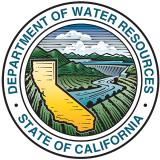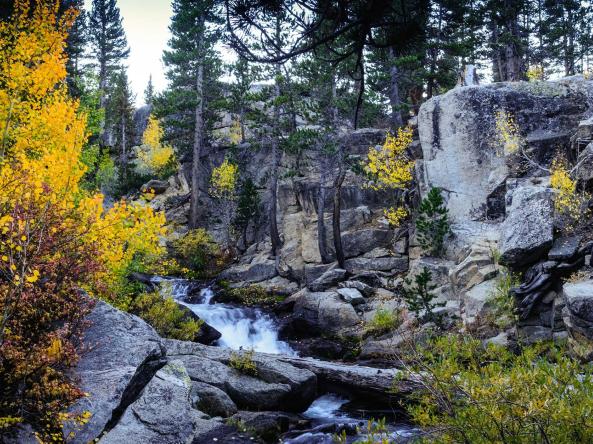Little Change in Drought Conditions Early in the Water Year
Register here for the November 28 California-Nevada Drought & Climate Outlook Webinar.
Key Points
- The water year started with a dry October and a storm system in early November which wet the landscape.
- Reservoirs throughout the region remain low, and Lake Tahoe is below the rim.
- There is a 76% chance of La Niña during December through February. Historically La Niña decreases the likelihood of a wet winter for Southern California and Southern Nevada.
The U.S. Drought Monitor (USDM) is updated each Thursday to show the location and intensity of drought across the country. Drought categories show experts’ assessments of conditions related to dryness and drought including observations of how much water is available in streams, lakes, and soils compared to usual for the same time of year.
California/Nevada conditions as of November 15, 2022:
- 99.48% of California is experiencing Moderate (D1) to Exceptional (D4) Drought (28.18% in D3, 12.73% in D4)
- California population in drought: 37,231,428
- 100% of Nevada is experiencing Moderate (D1) to Exceptional (D4) Drought (43.37% in D3, 0% in D4)
- Nevada population in drought: 2,700,550
U.S. Drought Monitor Categories
The U.S. Drought Monitor (USDM) is updated each Thursday to show the location and intensity of drought across the country. Drought categories show experts’ assessments of conditions related to dryness and drought including observations of how much water is available in streams, lakes, and soils compared to usual for the same time of year.
California/Nevada conditions as of November 15, 2022:
- 99.48% of California is experiencing Moderate (D1) to Exceptional (D4) Drought (28.18% in D3, 12.73% in D4)
- California population in drought: 37,231,428
- 100% of Nevada is experiencing Moderate (D1) to Exceptional (D4) Drought (43.37% in D3, 0% in D4)
- Nevada population in drought: 2,700,550
Current Conditions
- According to the U.S. Drought Monitor, over the last month drought conditions have not changed very much. There was little to no precipitation through the region in October, which was broken by a system of storms in early November. Through October, this calendar year (January–October) has been California’s driest and Nevada’s 8th driest in a 127-year record.
- California is at 8.5% of the average water year precipitation. Regionally San Diego is at 21% of the average water year precipitation, while the Reno/Carson City area is below 6% of the average water year total.
- In Nevada, Lake Tahoe remains below the rim, and Rye Patch and Lahontan Reservoirs are still low. In California, Shasta and Oroville, the two largest reservoirs, are at 57% of the historical average.
- For more information, check out Living with Drought in Nevada and the California Water Watch.
How is drought affecting your neighborhood? Click to see drought indicators, outlooks, and historical conditions by city, county, and state, as well as sign up for alerts.
U.S. Drought Monitor 4-Week Change Map
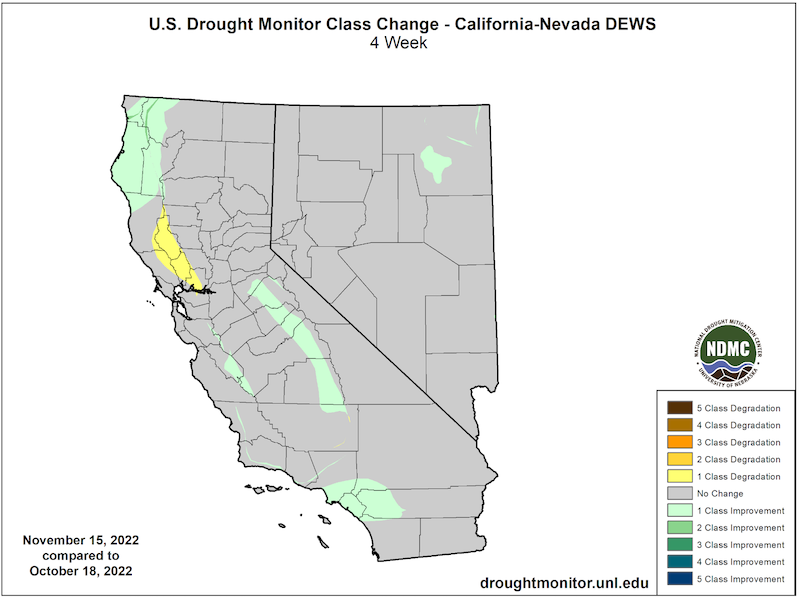
Water Year 2023 Percent of Normal Precipitation
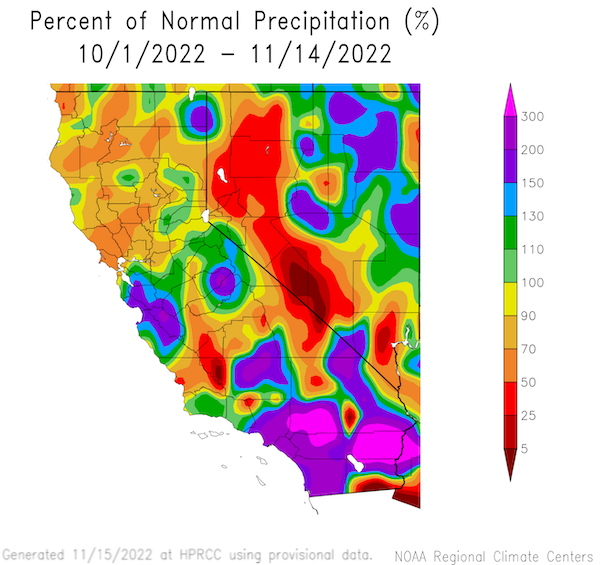
October 2022 Total Precipitation (Inches)
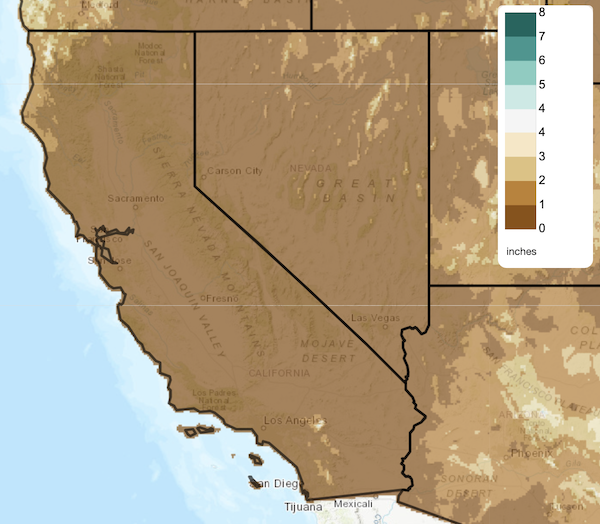
Precipitation Totals (Inches) for November 7–9, 2022
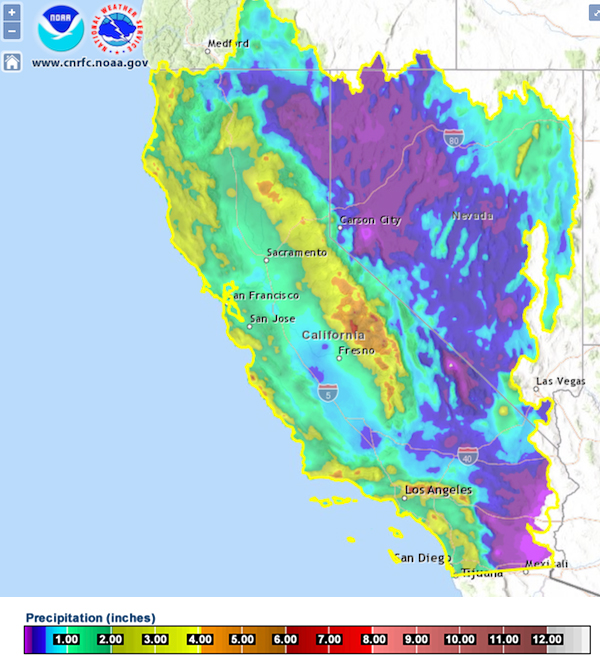
Snow Water Equivalent (SWE) Change for November 7–9, 2022
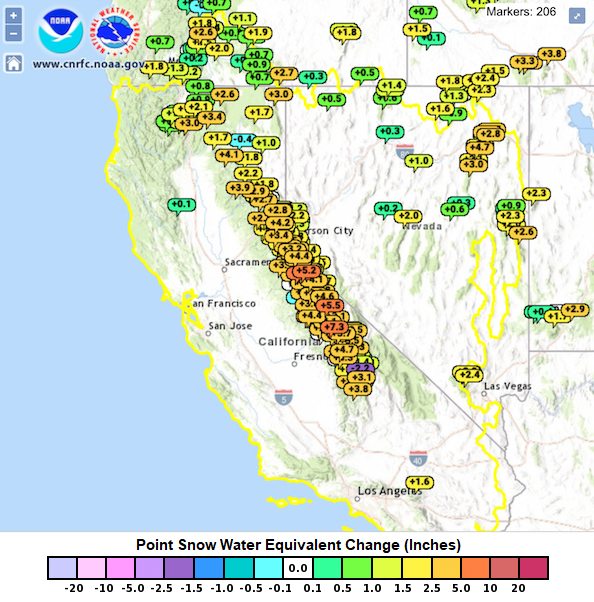
Water Storage in Lake Tahoe: Water Years 2020–2022
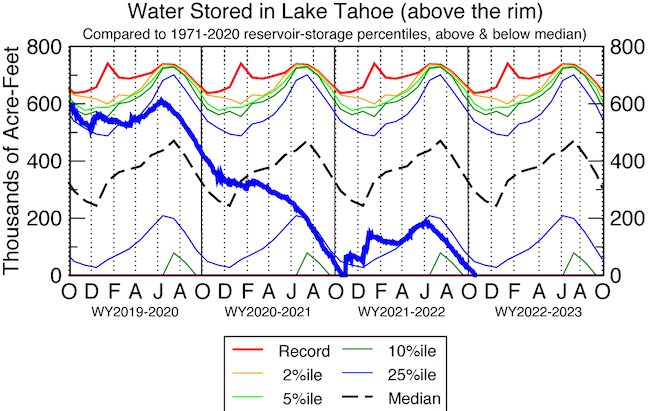
Water Storage in 9 Feather Watershed Reservoirs + Snowpack
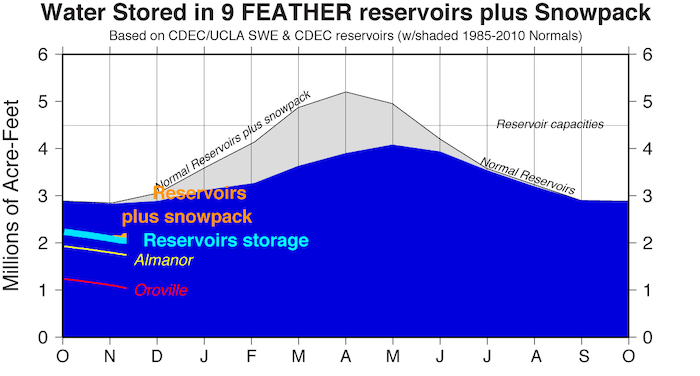
Drought and Climate Outlook
El Niño–Southern Oscillation (ENSO)
NOAA’s ENSO alert system status is currently a La Niña Advisory. There is a 76% chance of La Niña during the Northern Hemisphere winter (December–February) 2022–23, with a 57% chance for ENSO-neutral in February–April 2023. For more information, check out the NOAA ENSO blog or current status presentation and how La Niña impacts the Western U.S.
Subseasonal to Seasonal Drought, Temperature, and Precipitation Outlooks
The late autumn and early winter months are a highly transitional time of year, as the wet season begins to ramp up along the West Coast. The next one-to-three month forecast shows drought persisting across California and the Great Basin, given the La Niña advisory. However, an increasingly wet climatology through the late fall and early winter favors improvement across parts of Oregon, Washington, and coastal northern California. Historically, La Niña is associated with dry to normal conditions in the southern part of California and Nevada. The December-January-February outlook from the National Weather Service's Climate Prediction Center also favors above-normal temperatures for the region. In the near term (1–2 weeks), there may be some atmospheric river activity in the very northern parts of the region, but this remains uncertain.
Seasonal Drought Outlook: November 17, 2022–February 28, 2023
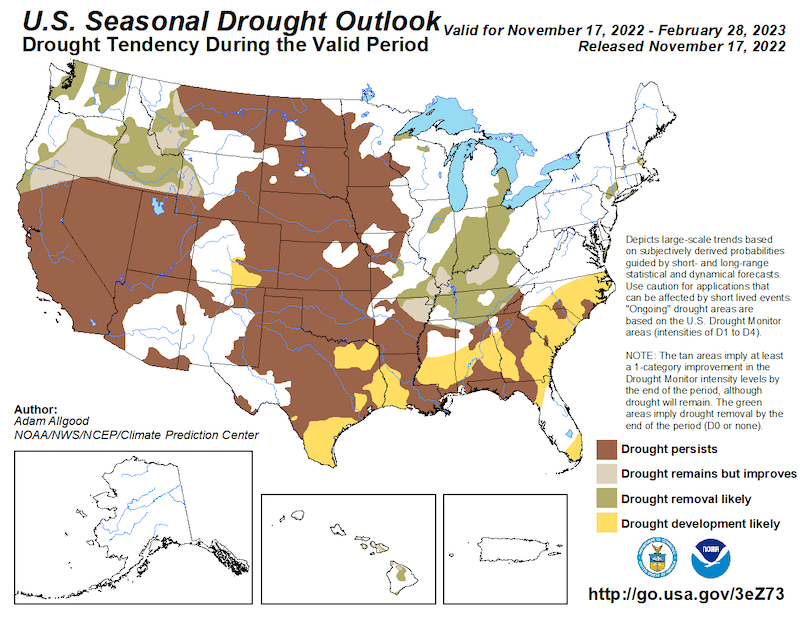
Seasonal (3-Month) Temperature and Precipitation Outlooks
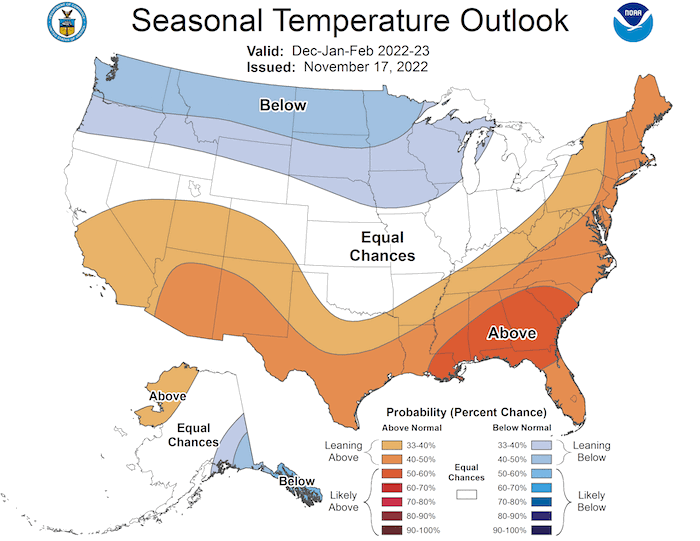
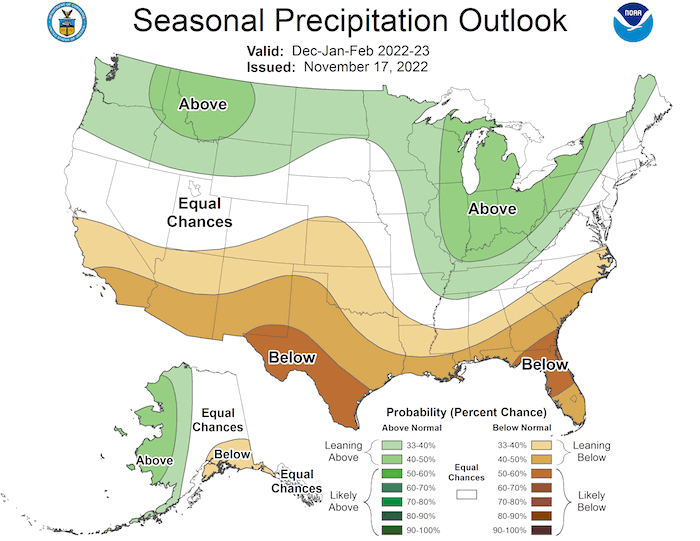
Likelihood and Timing of Atmospheric River Conditions
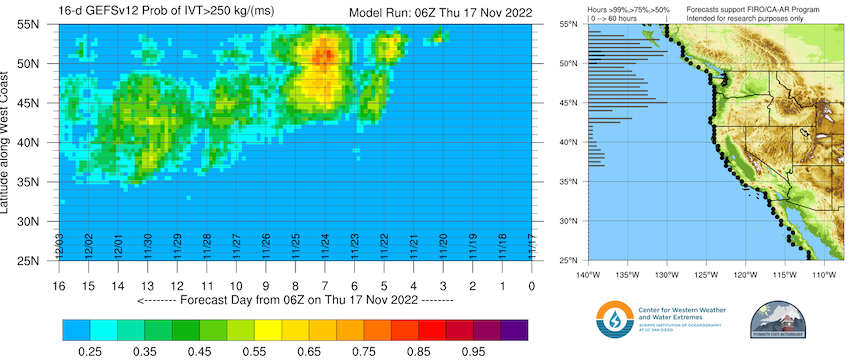
Drought Early Warning Resources
Prepared By
Julie Kalansky
Program Manager, California-Nevada Adaptation Program (A NOAA CAP/RISA team)
This drought status update is issued in partnership between the National Oceanic and Atmospheric Administration (NOAA), the California-Nevada Adaptation Program, a NOAA CAP/RISA team, and the Western Regional Climate Center at the Desert Research Institute to communicate the current state of drought conditions in California-Nevada based on recent conditions and the upcoming forecast. NIDIS and its partners will issue future drought status updates as conditions evolve.


